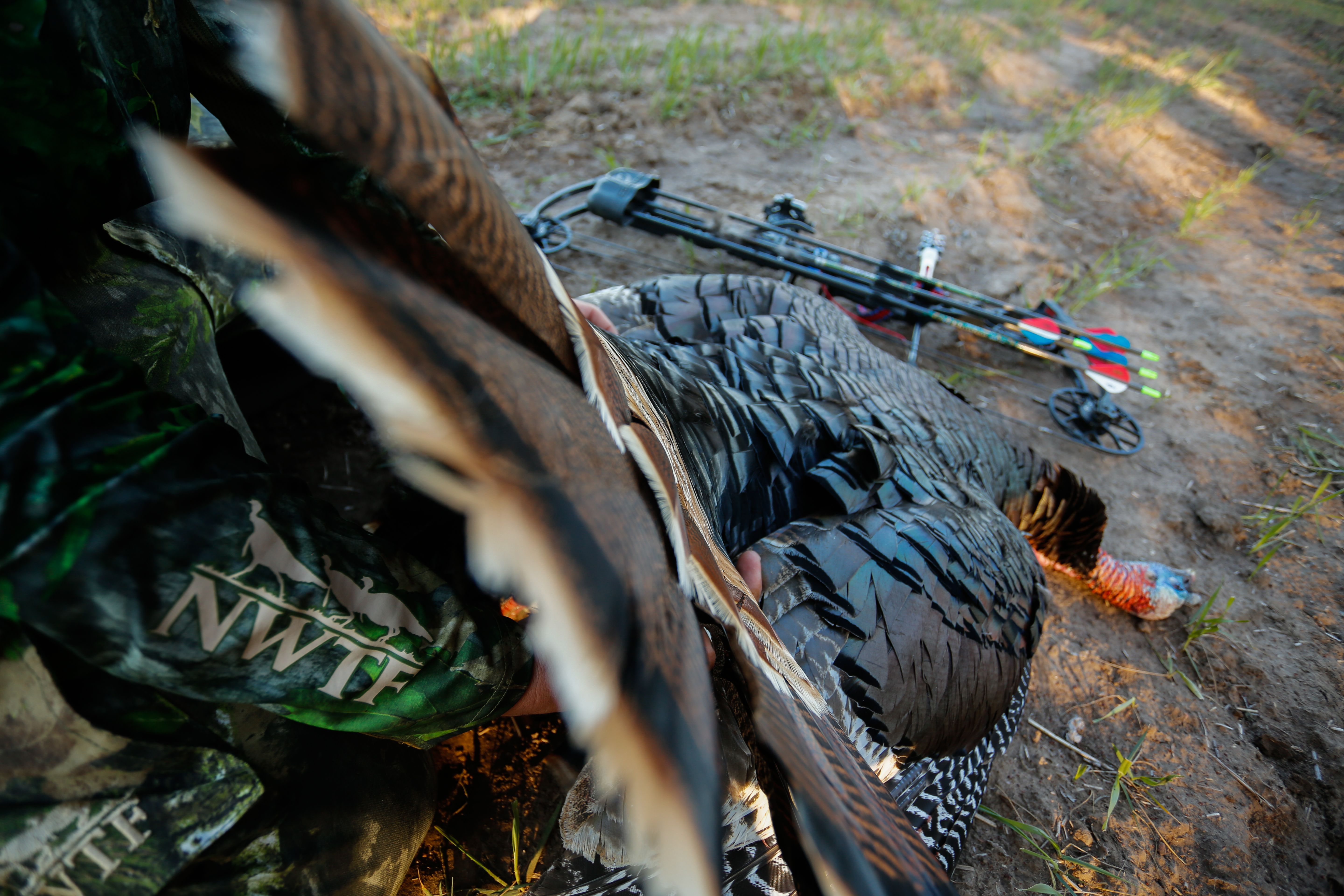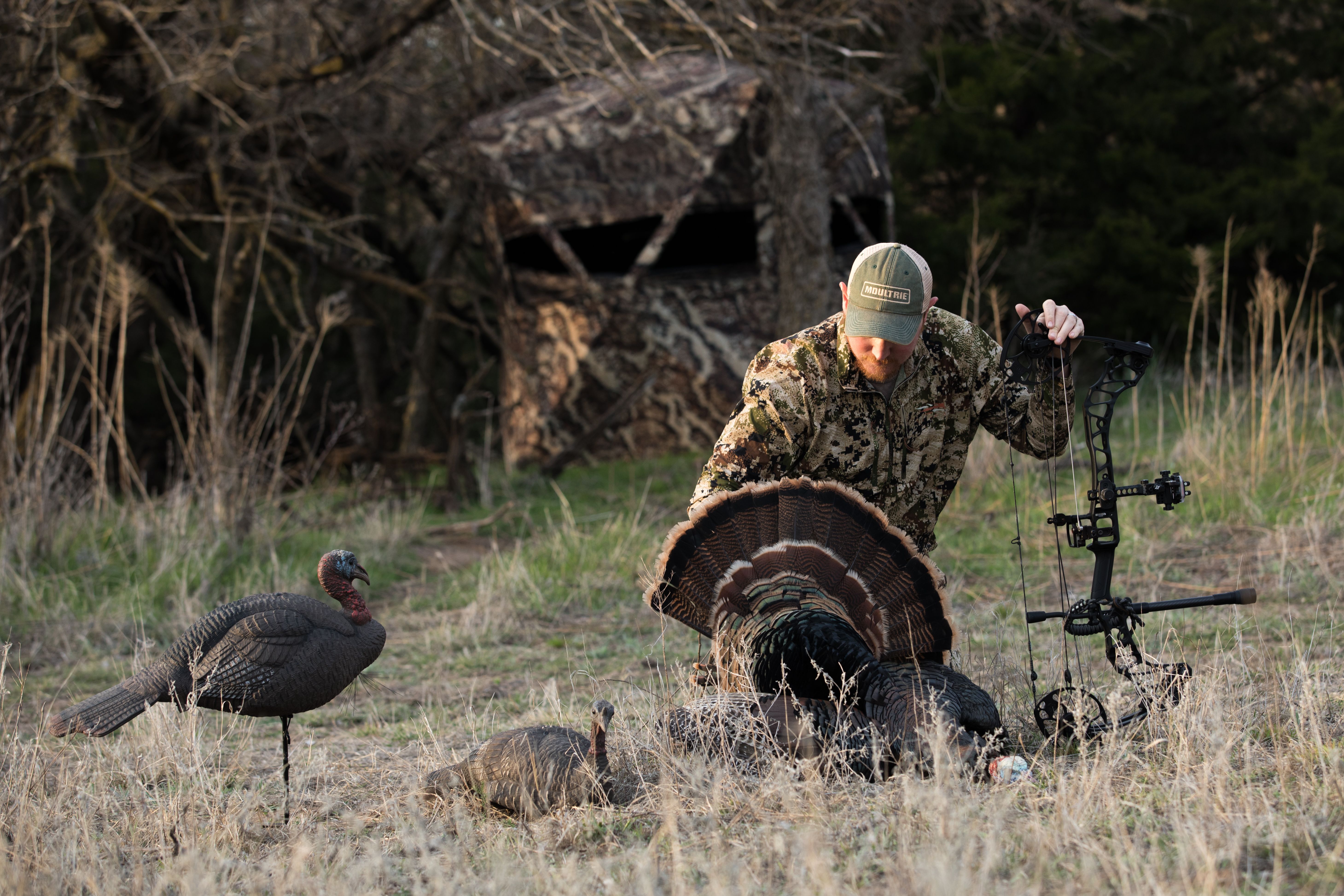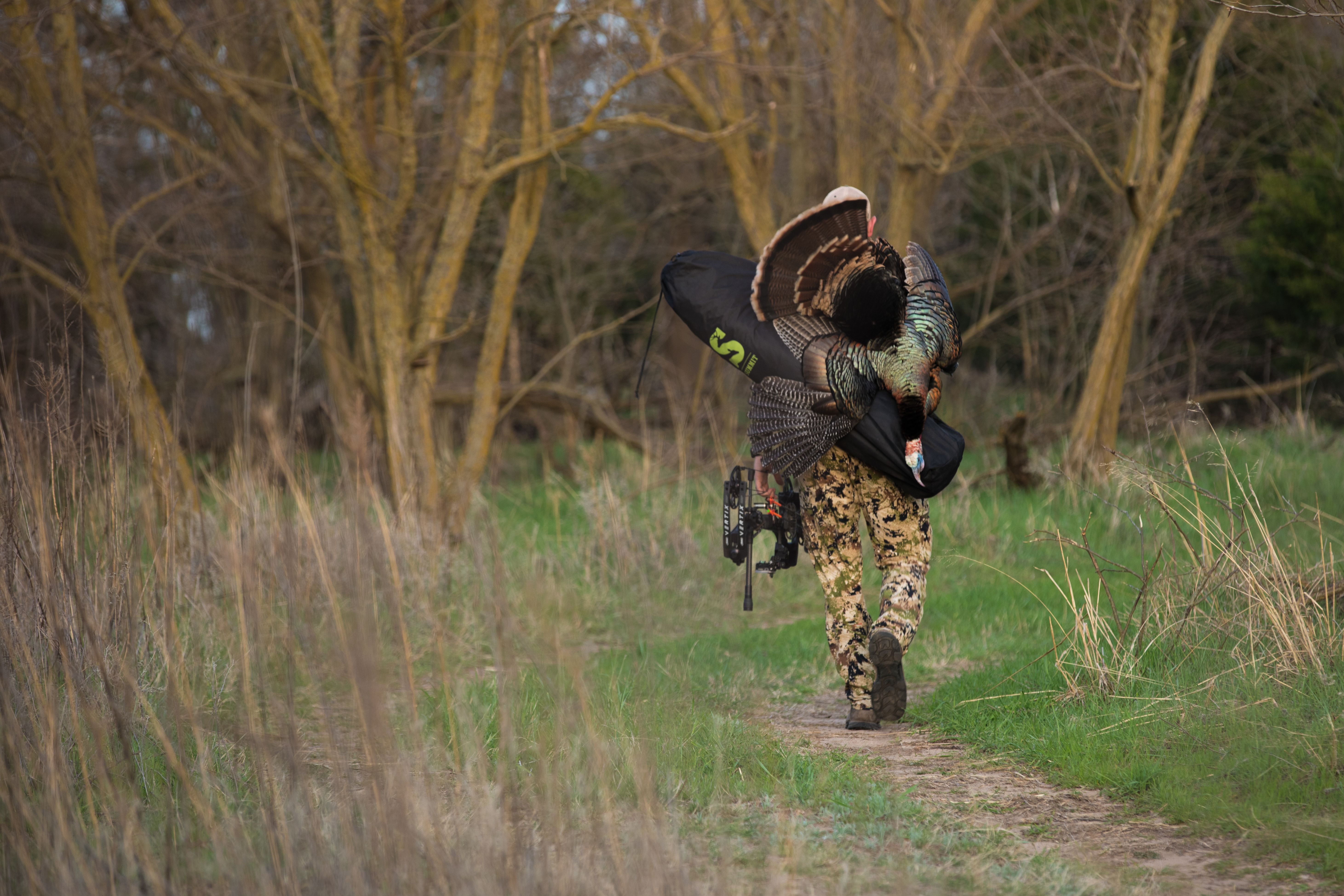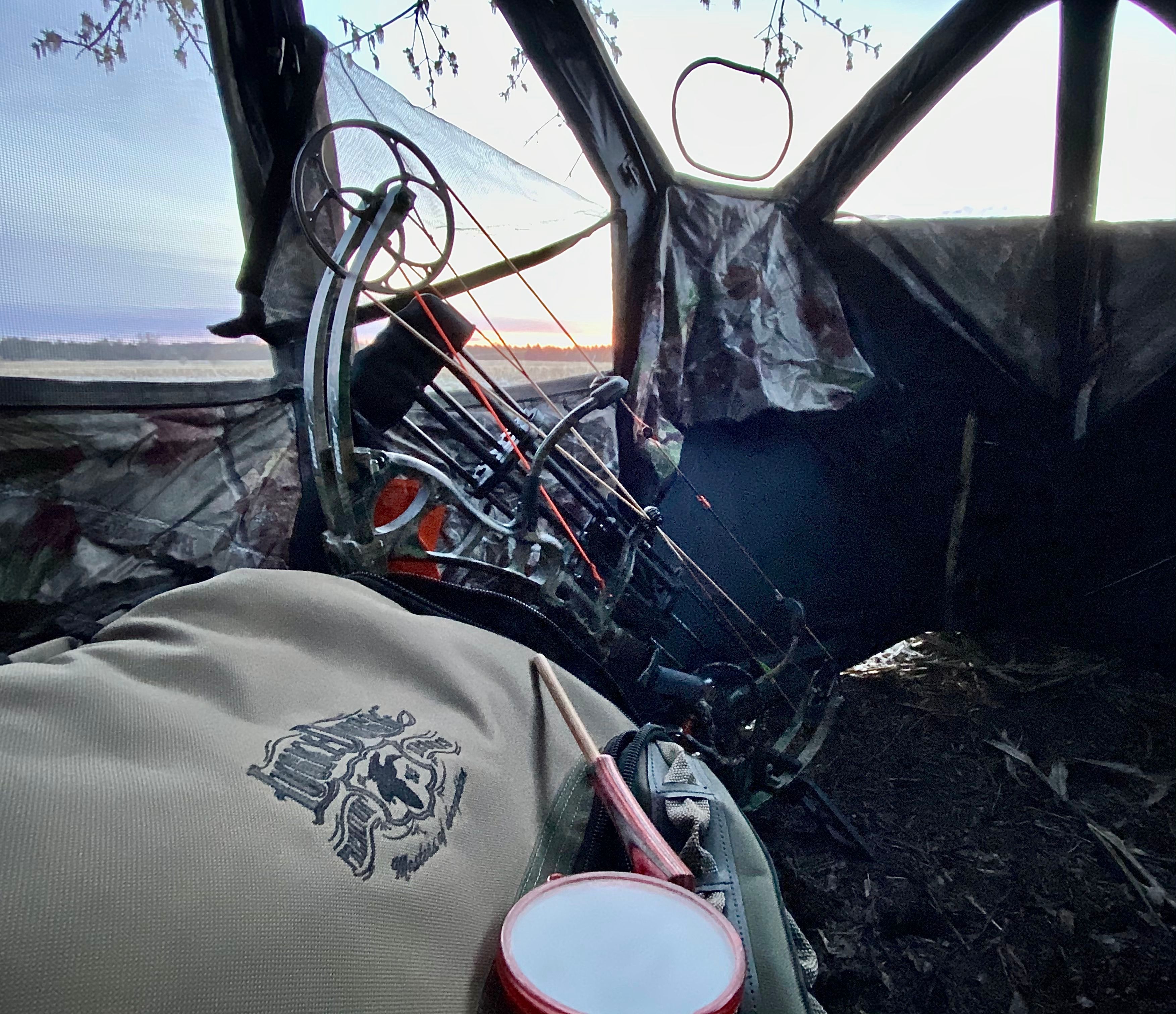Bow Hunting Spring Gobblers
Posted by Shawn McKinney on Apr 21st 2021

Have you ever attempted bowhunting for that spring gobbler? We all know hunting those spring gobblers can be challenging enough but getting them within bow range can add another level of intensity.
Pursuing a spring gobbler with a bow can be very exciting. Rather sitting in a comfortable pop-up ground blind, or just trying to be stealthy in a run-and-gun situation, it will get your heart beating no matter what. Both scenarios will test all your skills in both your calling and potential decoy sets. If everything is working together, and you can get a fired-up gobblers’ attention on your decoys, that’s about all you need to find an opportunity to get drawn back on him. Once they lock into a decoy set, especially if they feel threatened by another Tom/Jake intruding on his opportunity with the ladies, all their attention will remain focused on that. Many of times you’ll have a fighting situation going on while that gobbler repeatedly attacks your decoy, he will often pause from time-to-time resizing up his opponent, normally presenting a clean shot opportunity.

As an archer, knowing where to place that shot is the most important factor. The vitals on a turkey are very small, and your concept on where they are can easily be deceived based on strutting or relaxed feathers. Many of archers have been left frustrated over the decades because of missed-placed shots and have watched their spring bird fly off into the morning sky (many times with arrow still in tow). So, lets paint a mental picture on where to place that arrow, considering a broadside shot. What I like to imagine is a 90-degree angle, coming straight up the legs and then turning 90-degrees towards the base of the turkey’s beard. My broadside placement is now inside that imaginary corner. That will put your arrow inside the boiler room of that gobbler. A slight high miss of this location could put you on the spine of that turkey (also a fatal shot), or a slight low shot can put that arrow through the leg joint and/or helping pin that wing down to keep that bird grounded. Today’s large cut mechanical broadheads have sure helped a lot of archers be more successfully on those spring birds. Your margin of miss decreases with a large cut broadhead.

A forward facing or rearview angle on turkeys are sometimes desired to attempt direct spine impacts, but that’s not a shot placement I’ve ever attempted. Many archers, myself included, attempt headshots with that arrow. The size of the turkey’s head isn’t much smaller than the heart/lung vitals, and an impact in the cranium is guaranteed to be fatal. So, in most cases, attempting a head shot is either an instant harvest or a clean miss. Going after a head shot is often easier to focus on, to make a better shot, than an imaginary right angle over the wing. I for one would much rather have a clean miss, knowing that bird will see another day, than a marginal broadside shot leaving just a wounded bird out there unrecoverable.

